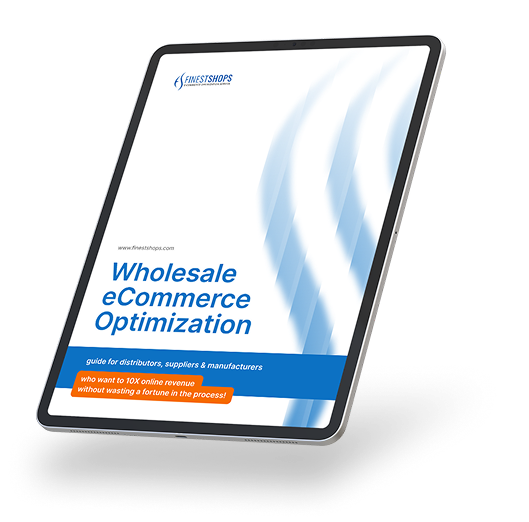Manual data entry is costly for B2B businesses. It’s time-consuming, prone to error, and a completely redundant practice to use in the digital age. The truth is that the most successful B2B businesses use software to process their data for a whole range of different reasons. Choosing not to synchronize and automate your data entries will make it difficult for your business to be competitive.
I’m Anton Pachkine and in this article, I’m going to highlight the damaging effects of manual data entry and how you can synchronize data to help your business grow and overtake your competition.
If you’re unsure about anything that’s been mentioned in this article, then don’t hesitate to book a call in my calendar to get more information on what’s been said.
Why B2B businesses must avoid manual data entry
Humans are prone to error. And if you give somebody the responsibility of manually entering figures into software, over a period of time they’ll inevitably make a number of mistakes. As you will know, entering just one wrong figure into a piece of software can lead to serious consequences.
Even when the error has been identified, the damage done may be too late since different parts of the supply chain will have already made calculated decisions and actions with the incorrect data. Studies show that for every $1 business spends on verifying data accuracy, they have to spend $10 to fix the error (Altametrics, 2020). So rectifying data errors can be up to ten times more costly than preventing them.
Apart from the financial costs associated with manual data entry, it’s an incredibly time-consuming activity for employees to engage in. This practice requires a lot of time that could be spent elsewhere on more important areas of the business.
And of course, manually entering data into software isn’t a task that’s favored amongst staff since it typically isn’t an engaging activity. Employees who have to repeatedly take on this burden are likely to become demotivated and disconnected from the company, which brings its own whole set of problems to the business.
To prevent these you must adopt a more automated process that synchronizes product data between multiple systems.
Let me show you how.
The different ways you can synchronize product data
Customer synchronization
When you synchronize customer information between ERP and E-commerce systems, you are unifying the customer experience. A frequent buyer may get in touch with your customer services team to change important information, such as their shipping address. These changes will also be made in the ERP system and will be reflected in others post-integration.
Doing so will personalize the customer experience, create self-service portals for customers, and much more.
Product synchronization
This form of synchronization ensures that all of your eCommerce and ERP systems will be in sync with one another, which is crucial to fulfilling the needs of your customers. Any disconnect between the two systems carries the risk of customers ordering out-of-stock items.
This is actually quite a common occurrence, where buyers are informed a day or two later that their purchase has been canceled due to the product being out of stock. When this happens, it’s very unlikely for the customer to make a repeat purchase.
Delivery synchronization
Providing customers with regular updates about the shipment status of their purchase will strengthen your relationship with them. This builds trust, enhances credibility and provides them with confidence that their product will arrive at the right destination. By synchronizing your eCommerce and ERP systems, you’ll improve customer satisfaction and the overall experience of purchasing from your company.
Sales Order Synchronization
Although purchases are made on the eCommerce system, the actual fulfillment of the order is processed in the ERP system. When these two systems aren’t synchronized, employees are forced to update the data on both of the different platforms.
A single error in the manual data entry process will create a mismatch between the two platforms, leading to a failure somewhere in the supply chain when fulfilling the order. Sales order synchronization will prevent this from happening altogether as well as automating the shopping experience, improving customer satisfaction and helping you to scale.
By the way…
I know we’ve covered a number of different topics in this post today, so if you’re feeling lost or would like additional information on anything that’s been said, don’t hesitate to book a time in my calendar.
Key industry facts & figures
- Disengaged employees cost organizations in the USA approximately $450-550 billion each year (The Conference Board)
- For large businesses that operate on a 1% error rate, firms with 18,000 employees that pay a salary of $25,000 a year can lose up to $4.5 million (Beqom).
- For every $1 a business spends on preventing an error, it will have to pay $10 to fix the mistake (Altametrics, 2020)
Final thoughts
Manual data entry is costly. B2B eCommerce businesses that continue to adopt this method will never outgrow their competition due to the inevitable build-up of errors that they create. In order for any B2B seller to successfully complete a customer order, data entry must be accurate.
If not, different parts of the supply chain will be operating with different sets of data, making it highly unlikely for the customer’s product to be delivered on time or at all. Moreover, forcing staff to manually enter data into systems is both time-consuming and de-motivating, which in itself creates additional internal problems for businesses.
Data synchronization can prevent all of these problems whilst improving the efficiency of the supply chain, decreasing order fulfillment time, and most importantly, eliminating data entry mistakes. All of these benefits will have a wider impact on your brand’s perceived value as well as strengthening your relationship with customers, who are crucial to achieving growth.
To discover more about manual data entry and the different ways you can synchronize data, then feel free to book a time in my calendar for a free 1:1 consultation.

